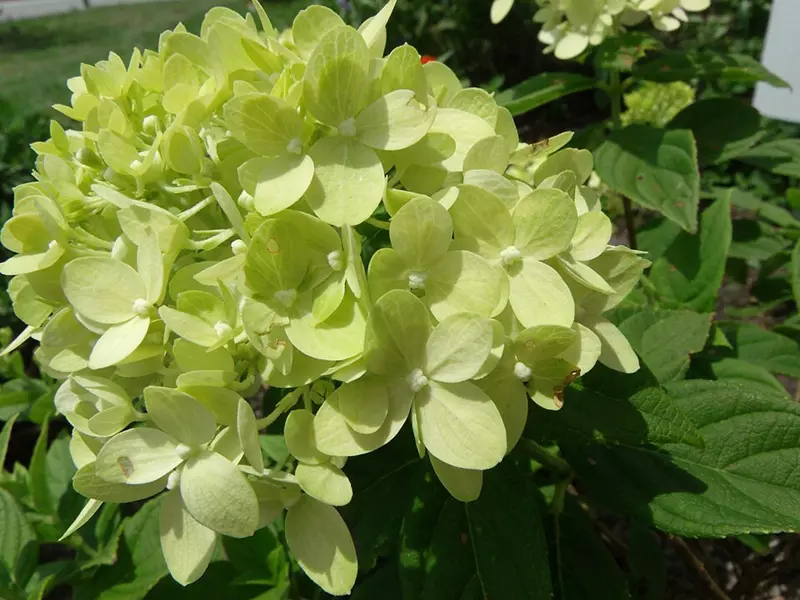
Top 10 Hydrangea Paniculata Varieties for Your Garden
Discover the top 10 Hydrangea paniculata varieties popular in the UK. These stunning plants are ideal for gardens of all sizes and styles.
Read MoreKnown for its massive, globe-shaped, white flower heads, 'Annabelle' is a show-stopping variety that blooms from mid-summer to autumn.
Hydrangea arborescens 'Annabelle', commonly known as 'Annabelle' hydrangea, is a beloved deciduous shrub renowned for its stunning, large white flower heads and robust growth habit. This cultivar has become a favourite among gardeners seeking a reliable and showy addition to their landscapes.
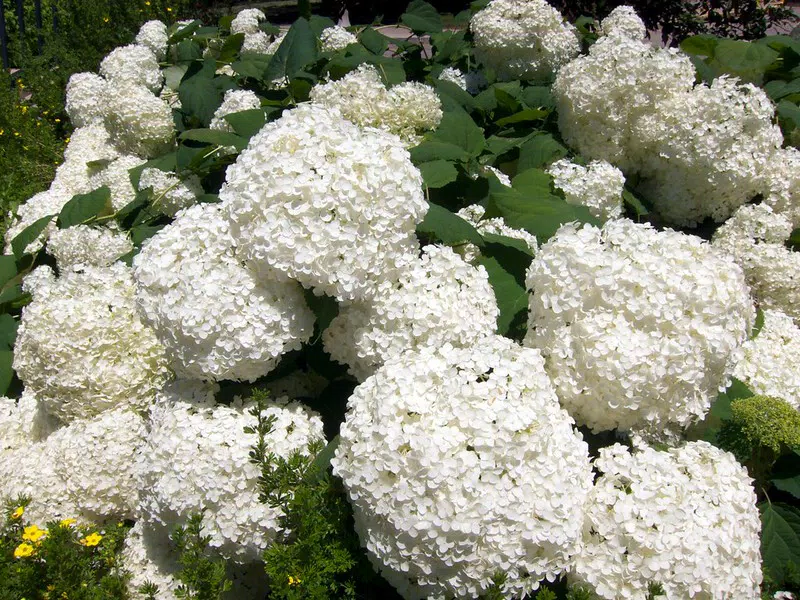
'Annabelle' is a cultivar of Hydrangea arborescens, a species native to the eastern United States. The 'Annabelle' variety was discovered in the wild near Anna, Illinois, in the 1960s, which is reflected in its name.
This hydrangea is characterised by its massive, spherical flower clusters, known as corymbs, which can reach up to 30 cm (12 inches) in diameter. The blooms emerge a pale green, maturing to a brilliant white from mid-summer through to autumn. The foliage consists of dark green, serrated leaves that provide an attractive backdrop to the luminous flowers.
'Annabelle' is an excellent choice for gardeners seeking a low-maintenance shrub with high ornamental value. Its impressive flower heads make it ideal for use as a focal point in garden beds, borders, or as part of a mixed shrub planting. Additionally, its adaptability to various light conditions and soil types makes it suitable for both novice and experienced gardeners.
Hydrangea arborescens 'Annabelle' offers a combination of striking beauty and ease of cultivation. Its large, luminous blooms and robust nature make it a standout choice for enhancing garden landscapes with minimal effort.
This stunning variety produces lime-green flowers that gradually turn pink as the season progresses. It’s ideal for long-lasting garden displays.
Hydrangea paniculata 'Limelight' is a deciduous shrub renowned for its striking lime-green flowers that transition to creamy white and pink hues as the season progresses. This cultivar has gained popularity among gardeners for its robust nature and stunning visual appeal.
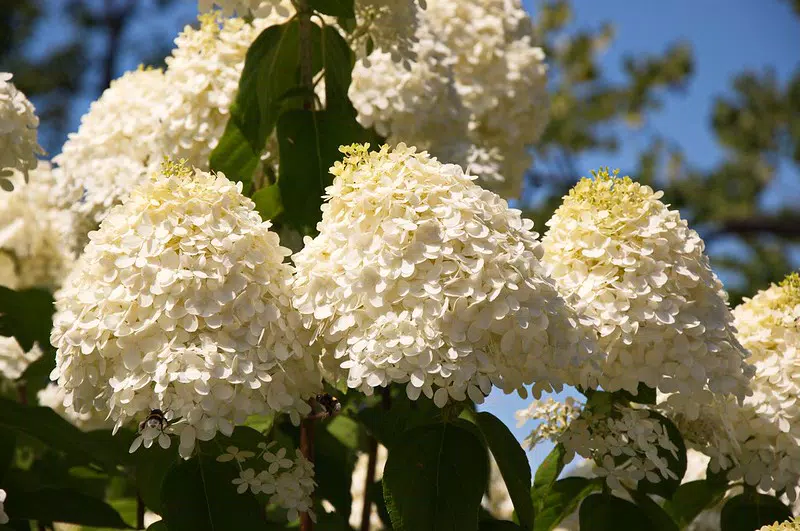
Hydrangea paniculata, commonly known as panicle hydrangea, is native to parts of Asia, including China and Japan. The 'Limelight' cultivar was developed in the Netherlands and has since become a favourite in gardens worldwide.
'Limelight' features large, conical flower panicles that can reach up to 30 cm in length. The blooms emerge in a refreshing lime-green shade, gradually turning creamy white and eventually taking on pink tones as they mature. The shrub typically grows to a height of 1.5 to 2.5 metres, with a similar spread, forming an upright and open habit.
'Limelight' is an excellent choice for gardeners seeking a low-maintenance shrub with high ornamental value. Its impressive flower heads make it ideal for use as a focal point in garden beds, borders, or as part of a mixed shrub planting. Additionally, its adaptability to various light conditions and soil types makes it suitable for both novice and experienced gardeners.
Hydrangea paniculata 'Limelight' offers a combination of striking beauty and ease of cultivation. Its large, luminous blooms and robust nature make it a standout choice for enhancing garden landscapes with minimal effort.
This repeat-flowering variety offers blooms throughout the growing season, with colours that shift from blue to pink depending on soil pH.
Hydrangea macrophylla 'Endless Summer' is a renowned deciduous shrub celebrated for its ability to bloom on both old and new wood, providing continuous flowering throughout the growing season. This unique characteristic distinguishes it from traditional hydrangea varieties, making it a favourite among gardeners seeking prolonged floral displays.
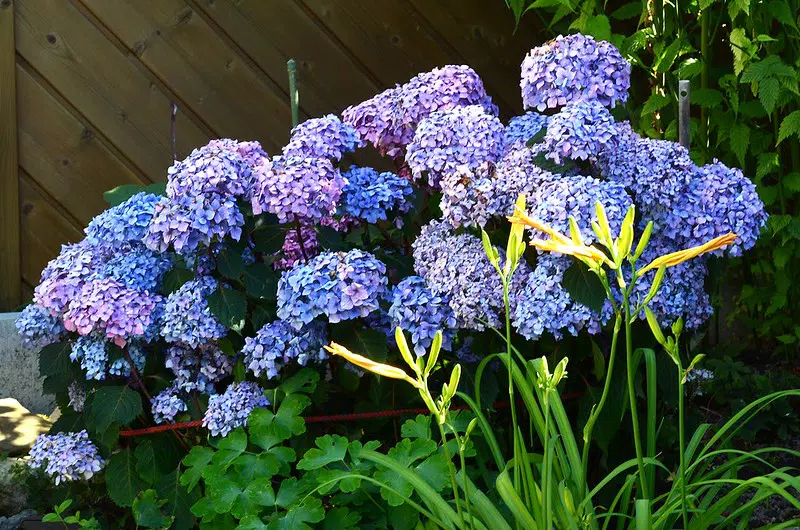
The Endless Summer hydrangea was discovered by Vern Black of Bailey Nurseries in 1983. After extensive research and trials, it was introduced to the public in 2004, revolutionising the hydrangea world with its reblooming capabilities.
This cultivar features large, mophead flower clusters that can range from vivid blue to soft pink, depending on the soil's pH level. The blooms are complemented by lush, dark green foliage, creating a striking contrast. The shrub typically reaches a height and spread of 3 to 5 feet, forming a compact and rounded habit.
'Endless Summer' is ideal for gardeners desiring a hydrangea that offers extended blooming periods with minimal maintenance. Its adaptability to various light and soil conditions makes it suitable for a wide range of garden settings, including borders, containers, and small gardens. Additionally, its continuous bloom cycle provides long-lasting colour and interest in the landscape.
Hydrangea macrophylla 'Endless Summer' combines beauty and resilience, offering gardeners the pleasure of continuous blooms throughout the growing season. Its unique reblooming ability, coupled with its adaptability, makes it a valuable addition to any garden.
This lacecap variety is a favourite for its delicate, flat blooms that range from periwinkle blue to deep pink.
Hydrangea macrophylla 'Twist and Shout' is a remarkable deciduous shrub, celebrated as the first reblooming lacecap hydrangea in the Endless Summer® series. Its ability to produce flowers on both old and new wood ensures a continuous display of blooms from late spring through autumn.
'Twist and Shout' is a cultivar developed by the Endless Summer® collection, known for introducing hydrangeas that bloom repeatedly throughout the growing season. This variety has gained popularity among gardeners for its unique lacecap flowers and extended blooming period.
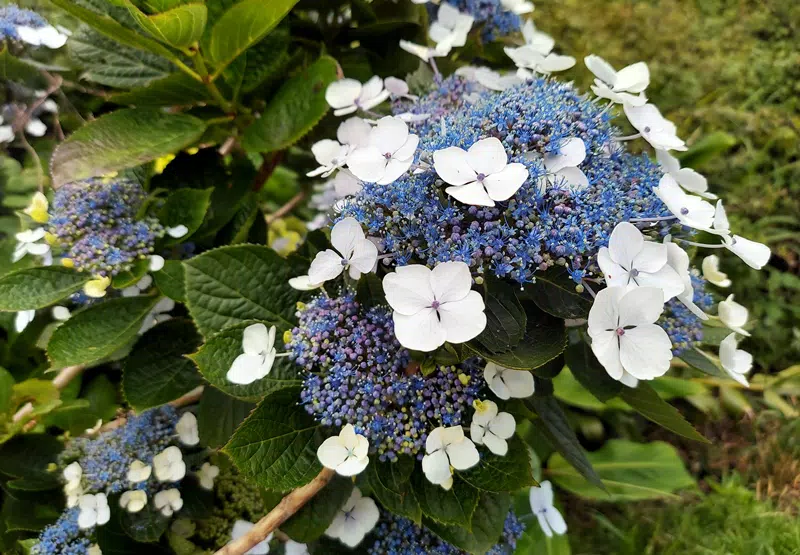
This hydrangea features broad lacecap flower heads composed of deep pink centres surrounded by blossoms of pink or periwinkle blue, depending on soil pH. The blooms are complemented by reddish, branching stems and ovate, serrated green leaves that turn deep red in autumn, adding seasonal interest to the garden.
'Twist and Shout' is ideal for gardeners seeking a low-maintenance shrub with high ornamental value. Its impressive flower heads make it ideal for use as a focal point in garden beds, borders, or as part of a mixed shrub planting. Additionally, its adaptability to various light conditions and soil types makes it suitable for both novice and experienced gardeners.
Hydrangea macrophylla 'Twist and Shout' offers a combination of striking beauty and ease of cultivation. Its large, luminous blooms and robust nature make it a standout choice for enhancing garden landscapes with minimal effort.
Renowned for its colour-changing flowers, this variety starts with creamy white blooms that gradually turn pink and finally deep red.
Hydrangea paniculata 'Vanille Fraise', commonly known as 'Vanilla Strawberry', is a deciduous shrub celebrated for its large, cone-shaped flower panicles that undergo a captivating colour transformation throughout the blooming season. This variety has gained popularity among gardeners for its striking appearance and robust growth habit.

'Vanille Fraise' is a cultivar of Hydrangea paniculata, a species native to parts of Asia, including China and Japan. This particular variety was developed in France and has since become a favourite in gardens worldwide.
This hydrangea features large, conical flower panicles that can reach up to 30 cm in length. The blooms emerge in a creamy white hue, gradually transitioning to soft pink and deepening to a rich strawberry red as they mature, creating a stunning two-tone effect. The shrub typically grows to a height of 1.5 to 2 metres, with a similar spread, forming an upright and open habit.
'Vanille Fraise' is an excellent choice for gardeners seeking a low-maintenance shrub with high ornamental value. Its impressive flower heads make it ideal for use as a focal point in garden beds, borders, or as part of a mixed shrub planting. Additionally, its adaptability to various light conditions and soil types makes it suitable for both novice and experienced gardeners.
Hydrangea paniculata 'Vanille Fraise' offers a combination of striking beauty and ease of cultivation. Its large, luminous blooms and robust nature make it a standout choice for enhancing garden landscapes with minimal effort.
This lacecap hydrangea is prized for its elegant blue or pink flowers, depending on the soil’s pH level.
Hydrangea macrophylla 'Blue Wave', also known as 'Mariesii Perfecta', is a deciduous shrub celebrated for its elegant lacecap flowers and glossy green foliage. This cultivar has been a favourite among gardeners seeking a blend of subtle beauty and robust performance in their landscapes.
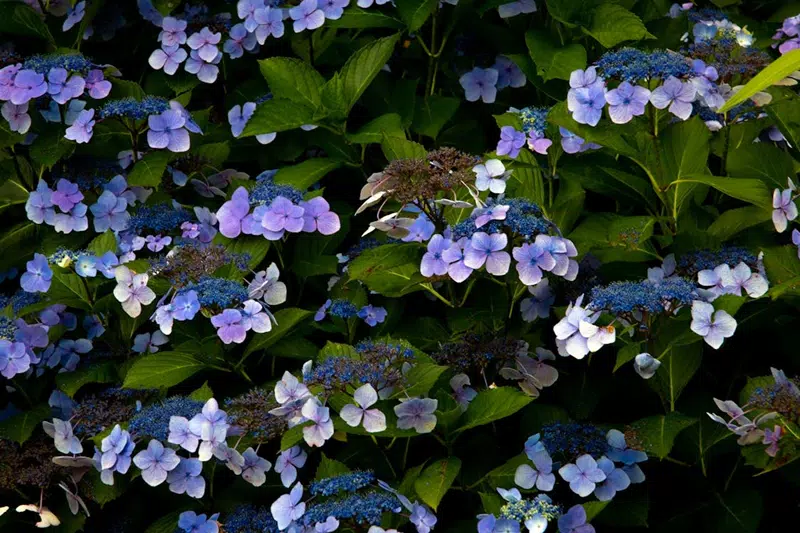
'Blue Wave' is a cultivar of Hydrangea macrophylla, a species native to Japan and Korea. This particular variety was introduced into commerce in 1904 by the renowned French nurseryman Victor Lemoine.
This hydrangea features flattened lacecap flower heads composed of small, fertile central florets surrounded by larger, showy sterile florets. The bloom colour varies with soil pH: in acidic soils, the flowers are rich blue, while in neutral to alkaline soils, they take on pink or lilac hues. The shrub typically grows to a height and spread of 1.5 to 2 metres, forming a rounded habit with ovate, toothed green leaves up to 20 cm long.
'Blue Wave' is an excellent choice for gardeners seeking a low-maintenance shrub with high ornamental value. Its impressive flower heads make it ideal for use as a focal point in garden beds, borders, or as part of a mixed shrub planting. Additionally, its adaptability to various light conditions and soil types makes it suitable for both novice and experienced gardeners.
Hydrangea macrophylla 'Blue Wave' offers a combination of striking beauty and ease of cultivation. Its large, luminous blooms and robust nature make it a standout choice for enhancing garden landscapes with minimal effort.
This unique variety features cone-shaped flowers that transition from white to pink, creating a multi-coloured display.
Hydrangea paniculata 'Pinky Winky' is a deciduous shrub renowned for its large, conical flower panicles that exhibit a striking two-tone effect. This cultivar has gained popularity among gardeners for its robust nature and extended blooming period.
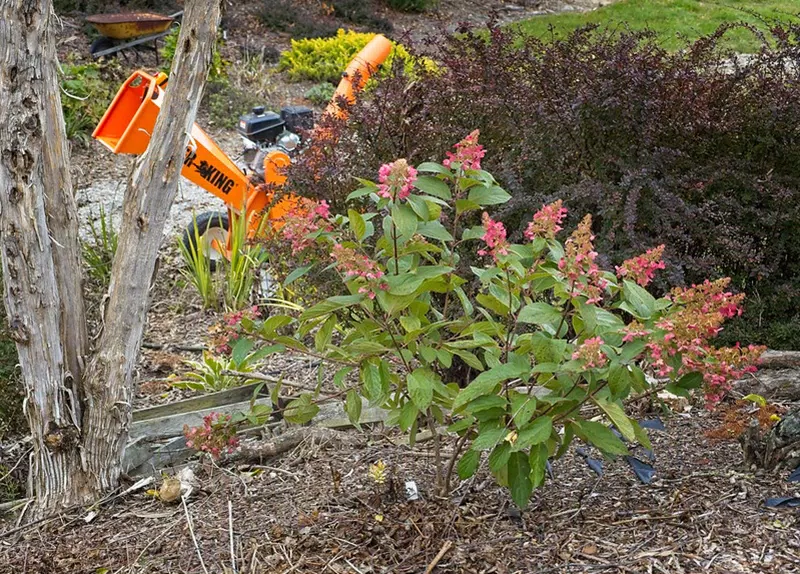
'Pinky Winky' is a cultivar of Hydrangea paniculata, a species native to parts of Asia, including China and Japan. This particular variety was developed in Belgium by horticulturist Johan Van Huylenbroeck and introduced to the market in 2005.
This hydrangea features large, conical flower panicles that can reach up to 30 cm in length. The blooms emerge white and gradually transition to pink from the base upwards, creating a captivating two-tone effect. The shrub typically grows to a height of 1.5 to 2 metres, with a similar spread, forming an upright and open habit.
'Pinky Winky' is an excellent choice for gardeners seeking a low-maintenance shrub with high ornamental value. Its impressive flower heads make it ideal for use as a focal point in garden beds, borders, or as part of a mixed shrub planting. Additionally, its adaptability to various light conditions and soil types makes it suitable for both novice and experienced gardeners.
Hydrangea paniculata 'Pinky Winky' offers a combination of striking beauty and ease of cultivation. Its large, luminous blooms and robust nature make it a standout choice for enhancing garden landscapes with minimal effort.
A compact version of 'Limelight', this variety is perfect for smaller gardens and containers, with flowers that transition from green to pink.
Hydrangea paniculata 'Little Lime' is a deciduous shrub celebrated for its compact size and vibrant, long-lasting blooms. As a dwarf version of the popular 'Limelight' hydrangea, 'Little Lime' offers the same stunning floral display in a more manageable form, making it an excellent choice for smaller gardens and container planting.
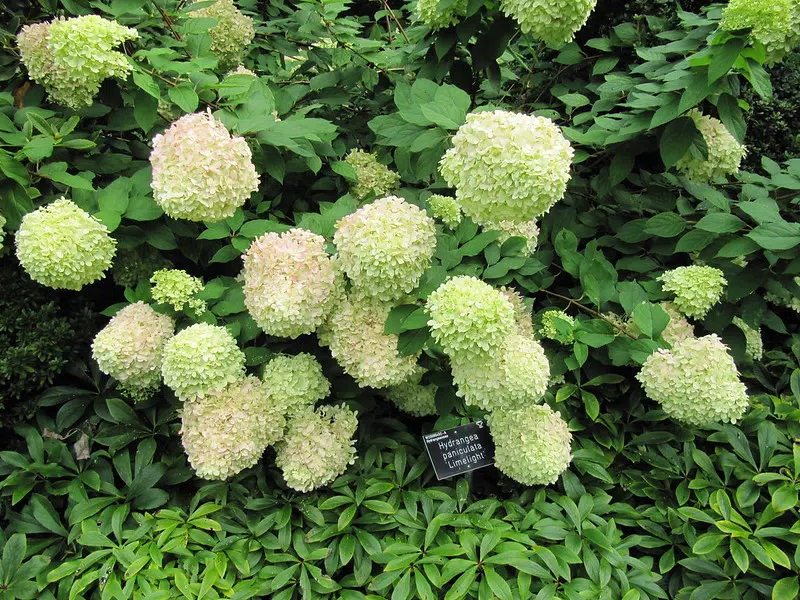
'Little Lime' is a cultivar of Hydrangea paniculata, a species native to parts of Asia, including China and Japan. This particular variety was developed as a more compact alternative to 'Limelight', retaining its parent plant's desirable characteristics while offering greater versatility in garden design.
This hydrangea features large, conical flower panicles that emerge in a refreshing lime green hue during mid-summer. As the season progresses, the blooms transition to creamy white and eventually take on pinkish tones in the autumn, providing a dynamic and evolving display. The shrub typically reaches a height and spread of 90 to 120 cm, forming a compact, rounded habit with sturdy stems that prevent flopping.
'Little Lime' is an excellent choice for gardeners seeking a low-maintenance shrub with high ornamental value. Its impressive flower heads make it ideal for use as a focal point in garden beds, borders, or as part of a mixed shrub planting. Additionally, its adaptability to various light conditions and soil types makes it suitable for both novice and experienced gardeners.
Hydrangea paniculata 'Little Lime' offers a combination of striking beauty and ease of cultivation. Its large, luminous blooms and robust nature make it a standout choice for enhancing garden landscapes with minimal effort.
This striking variety is known for its dark stems and vibrant blue or pink lacecap flowers, depending on soil pH.
Hydrangea macrophylla 'Zorro' is a distinctive deciduous shrub known for its striking lacecap blooms and dark purple-black stems. This ornamental variety adds elegance and visual interest to gardens, thriving in a range of settings while offering a unique colour display influenced by soil pH.

Hydrangea macrophylla is native to Japan and other parts of East Asia. While the specific origins of the 'Zorro' cultivar are not widely documented, it is recognised as a popular hybrid that builds upon the traditional appeal of the species, offering a modern and dramatic aesthetic.
'Zorro' is celebrated for its large, flat lacecap flowerheads that feature vibrant blue or pink florets, depending on soil pH. The blooms are surrounded by smaller fertile flowers, creating a layered, intricate display. The shrub typically grows to a height and spread of 1 to 1.5 metres, with its dark stems providing an eye-catching contrast to the lush green leaves.
Hydrangea macrophylla 'Zorro' is an excellent choice for gardeners seeking a shrub with dramatic visual appeal and seasonal interest. Its lacecap flowers and contrasting stems make it a standout feature in mixed borders, foundation plantings, or large containers. It's also ideal for those interested in experimenting with soil pH to enjoy different bloom colours.
Hydrangea macrophylla 'Zorro' is a stunning addition to any garden, offering versatility, ease of cultivation, and year-round beauty. Whether you’re a novice gardener or an experienced horticulturist, this hydrangea is sure to bring charm and elegance to your outdoor space.
A late-blooming variety, 'Tardiva' produces elongated white flowers that persist well into autumn.
Hydrangea paniculata 'Tardiva' is a deciduous shrub cherished for its late-season blooms and elegant floral display. Known for its large, cone-shaped flowers and robust growth, 'Tardiva' is a standout choice for gardeners looking to extend the blooming season into late summer and autumn.
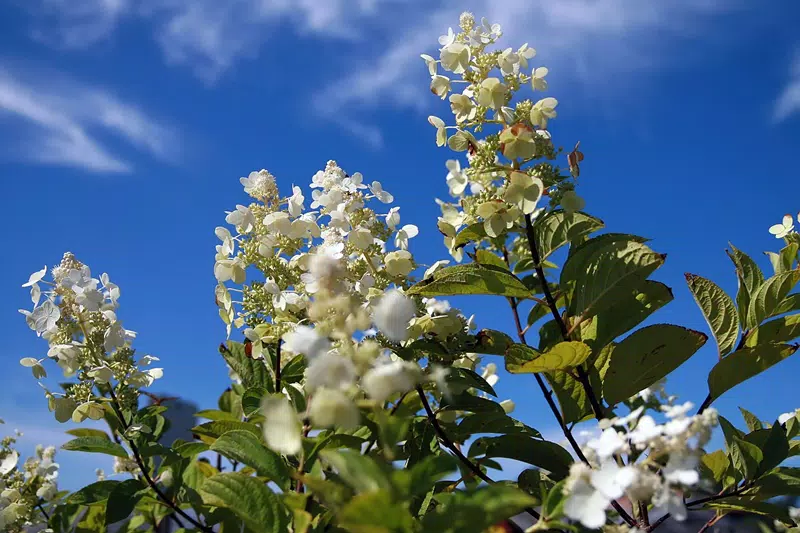
Hydrangea paniculata originates from parts of Asia, including China and Japan. The 'Tardiva' variety has been cultivated for its exceptional late blooming period, making it a popular choice for extending seasonal garden interest.
'Tardiva' is characterised by its upright growth habit and dark green foliage. Its flowers emerge in creamy white panicles, which gradually turn a soft pink as the season progresses. The shrub typically grows to a height of 1.2 to 2.5 metres with a similar spread, making it suitable for both small and large gardens.
'Tardiva' is ideal for gardeners who want to enjoy beautiful blooms later in the season. Its robust nature and minimal maintenance needs make it suitable for both novice and experienced gardeners. This hydrangea is perfect for use in mixed borders, as a focal point, or in larger landscape designs where its late blooms can add charm and elegance.
Hydrangea paniculata 'Tardiva' is a versatile and stunning addition to any garden. Its elegant blooms, adaptability, and low-maintenance requirements make it a perfect choice for creating an eye-catching, late-season display. Whether you're designing a formal garden or a casual landscape, 'Tardiva' is sure to impress.

Discover the top 10 Hydrangea paniculata varieties popular in the UK. These stunning plants are ideal for gardens of all sizes and styles.
Read More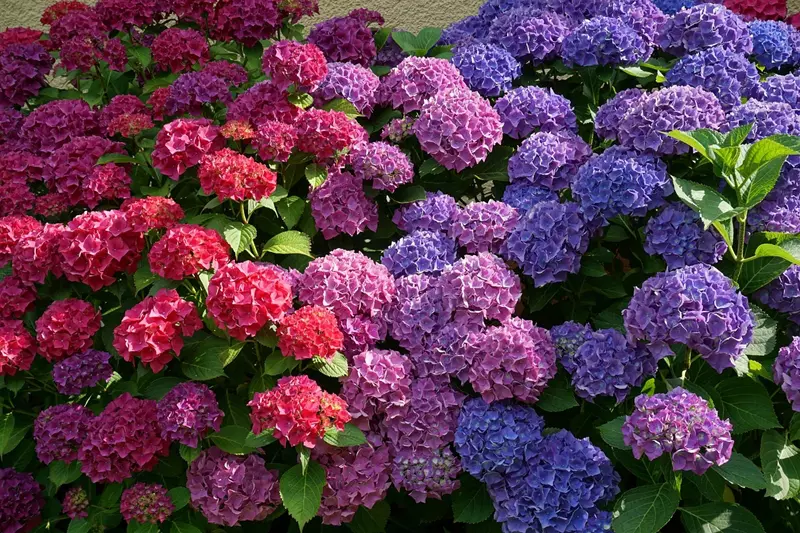
Discover 10 essential tips for ensuring abundant blooms in hydrangeas, including site selection, pruning, fertilisation, and pest protection.
Read More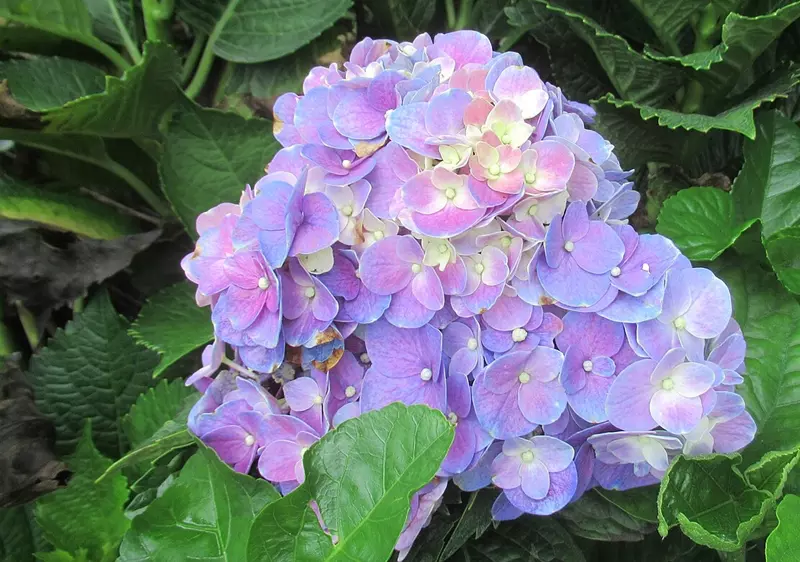
Discover proven tips and techniques to help your hydrangeas bloom again. From pruning to watering, this guide ensures a thriving garden.
Read More